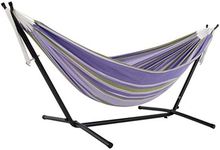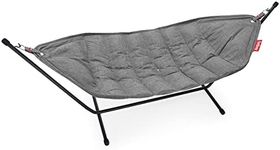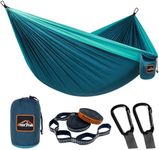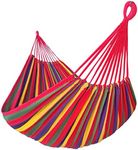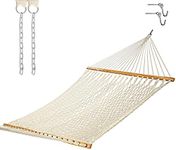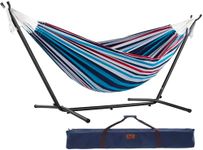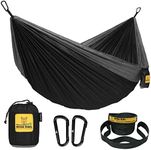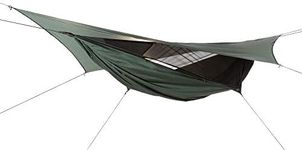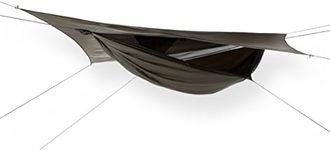Buying Guide for the Best Hammocks
Choosing the right hammock can greatly enhance your relaxation experience, whether you're planning to use it in your backyard, on a camping trip, or even indoors. The key to selecting the perfect hammock lies in understanding your specific needs and preferences, such as where you plan to use it, how portable you need it to be, and how many people will be using it at once. By considering these factors and understanding the key specifications, you can find a hammock that offers the comfort, durability, and convenience you desire.MaterialThe material of a hammock is crucial as it affects comfort, durability, and weather resistance. Common materials include cotton, polyester, and nylon. Cotton is soft and comfortable, ideal for indoor use or dry climates, but it can mildew if left wet. Polyester is more weather-resistant and durable, making it suitable for outdoor use. Nylon is lightweight and quick-drying, perfect for camping and hiking. Choose a material based on where you plan to use the hammock and the climate conditions it will face.
SizeHammock size determines how many people can use it and how comfortable it will be. Single hammocks are typically around 4-5 feet wide and are great for one person. Double hammocks are about 5-6 feet wide and can accommodate two people or provide extra space for one. There are also family-sized hammocks that are even larger. Consider who will be using the hammock and whether you prefer more personal space or plan to share it with others.
Weight CapacityWeight capacity indicates how much weight a hammock can safely support. This is important for safety and durability. Most single hammocks support up to 300-400 pounds, while double hammocks can hold 400-500 pounds or more. Always check the weight capacity to ensure it meets your needs, especially if multiple people will be using the hammock at the same time.
PortabilityPortability is a key factor if you plan to take your hammock on trips or hikes. Lightweight hammocks made from materials like nylon are easy to pack and carry, often coming with a compact carrying bag. If you need a hammock for camping or travel, look for one that is easy to set up and pack away. For backyard use, portability might be less of a concern, so you can opt for heavier, more permanent options.
Suspension SystemThe suspension system includes the ropes, straps, or chains used to hang the hammock. A good suspension system is easy to use, adjustable, and tree-friendly. Look for systems with wide straps to prevent damage to trees and adjustable lengths to accommodate different distances between anchor points. If you plan to frequently set up and take down your hammock, a simple and efficient suspension system will save you time and effort.
Weather ResistanceWeather resistance is important if you plan to leave your hammock outdoors. Some materials and designs are more resistant to UV rays, rain, and mildew. Polyester and nylon are generally more weather-resistant than cotton. Consider a hammock with a weather-resistant coating or one that is easy to clean and dry. If you live in a particularly wet or sunny area, prioritize weather resistance to ensure your hammock lasts longer.
